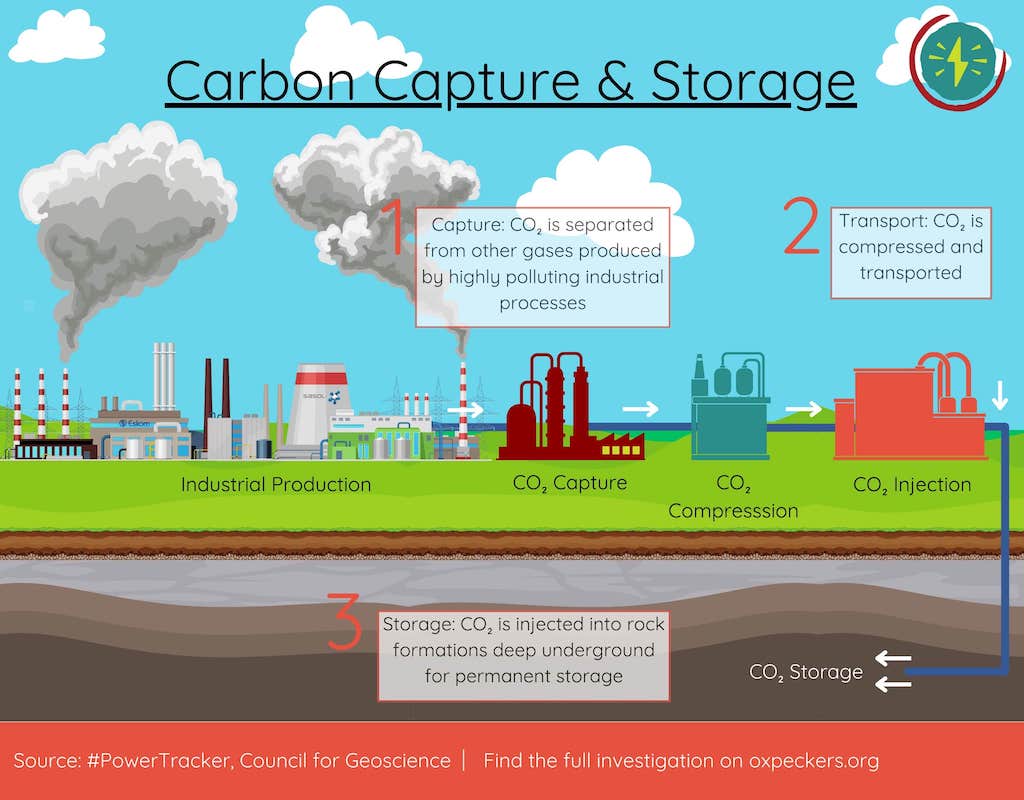
24 Apr Mpumalanga carbon capture pilot project completed
A pilot project in Mpumalanga’s energy heartland aims to capture air pollution and store it in the ground. Thabo Molelekwa investigates whether this controversial technology fits into a low-carbon economy

A project that offers a solution to harmful carbon emissions from burning coal by storing them underground or repurposing them has been completed in Leandra, a town at the epicentre of Mpumalanga’s air pollution.
The US$23-million pilot was developed by the Council for Geoscience at a site in Leandra because it is close to the emission sources from Sasol and several coal-fired plants, said Taufeeq Dhansay, manager of the minerals and energy integrated geoscience mapping programme at the council.
He said the principle behind the process, known as carbon capture and storage, is to take resources out of the ground and put them back in the same area. “In its simplest form, all you’re doing is preventing CO2 [carbon dioxide] from going into the atmosphere. For it to work, you generally want to be close to where the CO2 is being emitted, and you want to be able to store it in the same location where it was originally coming from.”
Air pollution in areas surrounding the coal power stations of Mpumalanga is ranked as some of the worst in the world, and is estimated to cause more than 2,200 deaths annually. Sasol is listed as one of 57 big companies that produced 80% of the world’s CO2 emissions from 2016 to 2022, and its synthetic fuel plant is based in Secunda, about 30 minutes’ drive from Leandra.
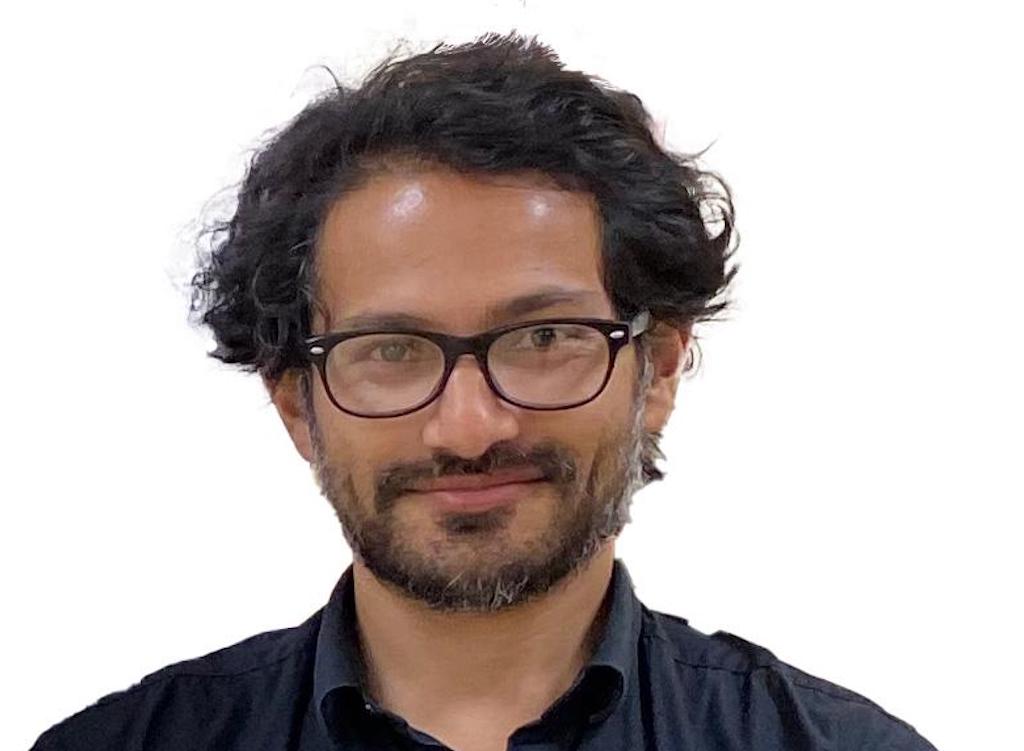
Taufeeq Dhansay: ‘While we are producing energy from coal, you have to mitigate the CO2 that will be coming from that energy.’ Photo supplied
Co-financing
The carbon capture pilot was co-financed by the South African government and the World Bank. It ended in February, and several reports on the geology and engineering design requirements are being compiled before the project proceeds to the next phase.
A US$23-million grant was provided from the World Bank Carbon Capture and Storage Trust Fund. “Of this amount, the government has provided financing equivalent to $15-million to complement the grant financing provided by the trust fund,” the World Bank South African Country office told Oxpeckers.
Asked what factors influenced the decision to invest in this initiative, the World Bank said: “Given the dependency of South Africa on coal, including for electricity generation, and the need for decarbonisation, there were several factors that influenced the decision to explore the feasibility of this engagement, including South Africa’s carbon emission profile, the potential for carbon dioxide storage and capture, and the availability of grant financing.
“The project’s objective was to assess the feasibility of and build expert capacity for CO2 storage in South Africa.”
The key areas of the project that the World Bank’s investment supported were the completion of site investigations, geological characterisation, and schematic and engineering design for CO2 storage in Leandra, located in the Govan Mbeki Municipality.
Dhansay explained geological characterisation as the process of understanding rock. “The idea is to store CO2 in the rocks. We need to characterise the rocks as much as possible to know if they can indeed absorb the CO2,” he said.
The next phase of the project will be construction, Dhansay said: “This phase means you drill a hole into the ground and into the geological formations of interest where you want to pump the CO2. Then, you develop surface infrastructure where you will slowly pump CO2 into the ground and monitor it with various machines and equipment to see how the rocks absorb it.”
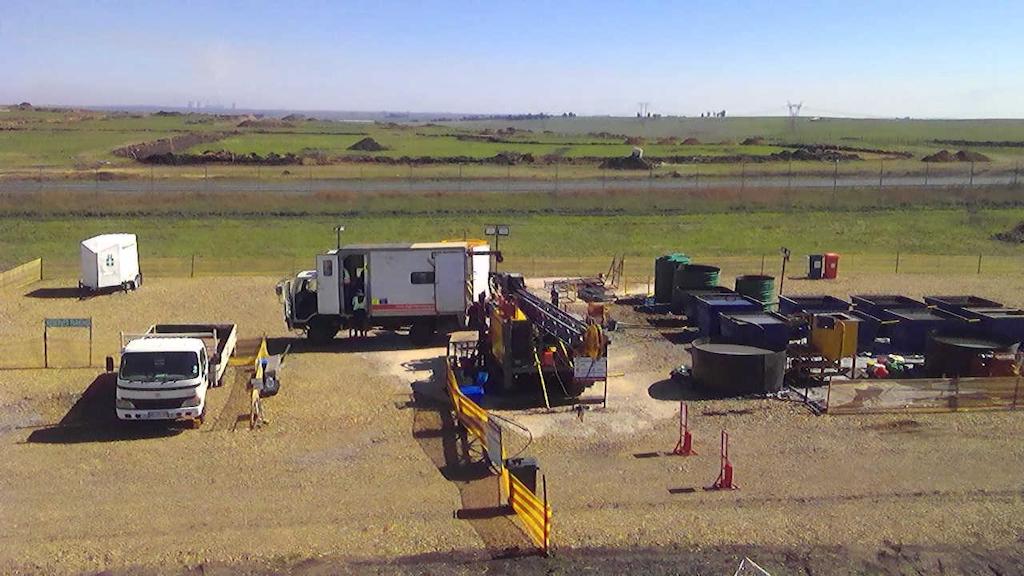
Pilot site: Leandra is close to the emission sources from Sasol and several coal-fired plants. Photo: supplied
Northern KwaZulu-Natal
A site in the Umkhanyakude District in northern KwaZulu-Natal was the first choice for the pilot project. “That site was selected because of the type of carbon storage that was going to be investigated. Subsequently, we realised that it was too far removed from the major emission sources,” said Dhansay.
German development agency GIZ estimates South Africa has a theoretical geological storage capacity of 150 gigatonnes (150-billion tonnes) of CO2. “The country emits about 500-million tonnes a year, so the 150-billion tonnes of storage potential would be more than enough,” said Dhansay.
He said transitioning away from coal in the short term presents a complex challenge due to the time and infrastructure required to establish alternative energy sources such as solar, wind, or nuclear power. While decisions outlined in the Integrated Resource Plan, the government roadmap for meeting electricity demand, indicate a gradual shift to renewable energy, “the reality is that coal will continue to play a role in energy production for the next decade or two”.
“Within the next 10 years we are still going to be producing energy from coal, and while we are producing energy from coal, you have to mitigate the CO2 that will be coming from that energy. Given this timeframe, it’s imperative to address the associated CO2 emissions,” Dhansay said.
“Carbon capture, utilisation and storage technology offers a solution by capturing CO2 emissions from coal combustion and either storing them underground or repurposing them for commercial applications such as fertiliser production or fire extinguishers,” he said.
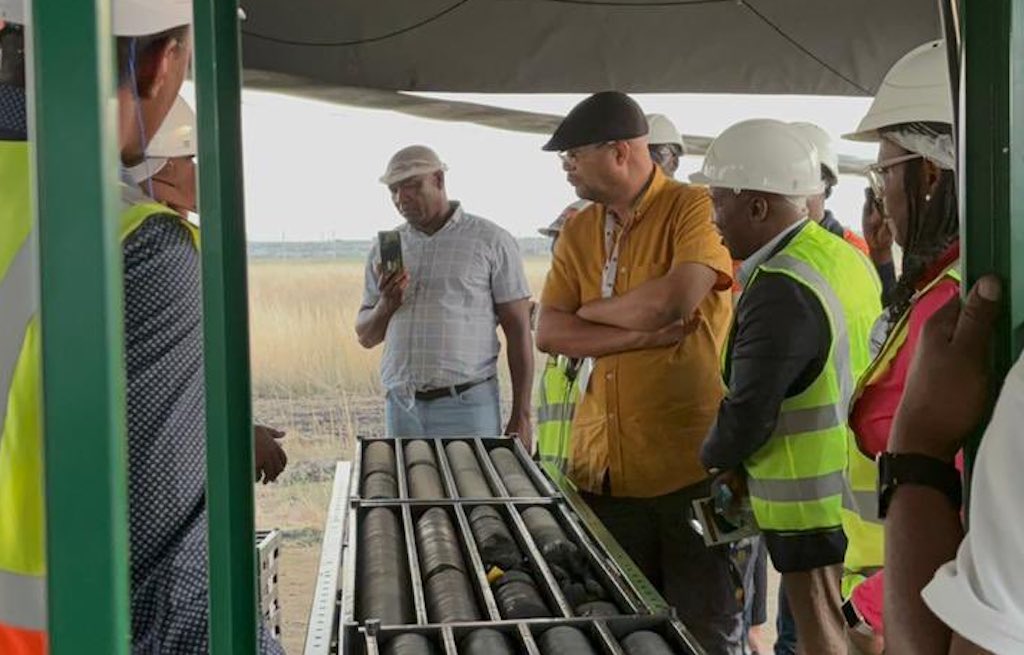
Site inspection: Phase two would involve drilling a hole into geological formations and slowly pumping CO2 into the ground. Photo supplied
Long-term benefits
The World Bank said the potential long-term benefits for South Africa, both in terms of environmental sustainability and economic development, could include “removal of CO2 from the environment and decarbonised economic growth in general”.
“Realising these benefits is subject to the successful achievement of the remaining stages of CO2 storage development that the World Bank is currently not involved in, including detailed engineering design, procurement, construction of the CO2 storage facility, and operation of the facility,” the country office told Oxpeckers.
Makhosonke Buthelezi, spokesperson of the Department of Mineral Resources and Energy, said more than 80% of power generation in South Africa comes from coal, mostly found in Mpumalanga, which makes it the economic backbone of the province.
“Transitioning to cleaner technology should take place with strong consideration of the socio-economic impact on the province. Carbon capture will enable newer and cleaner coal technologies while the Just Energy Transition is underway,” he said. “We pursue this project because it is a proven technology to mitigate carbon emissions in high-carbon intensity economies.”
According to Buthelezi, the knowledge gained through this project will enable South Africa to assist other countries in Africa to mitigate carbon emissions. “We collaborate with large carbon emitters and petrochemical industries, and we believe these collaborations will lead to the success of the project,” he added.
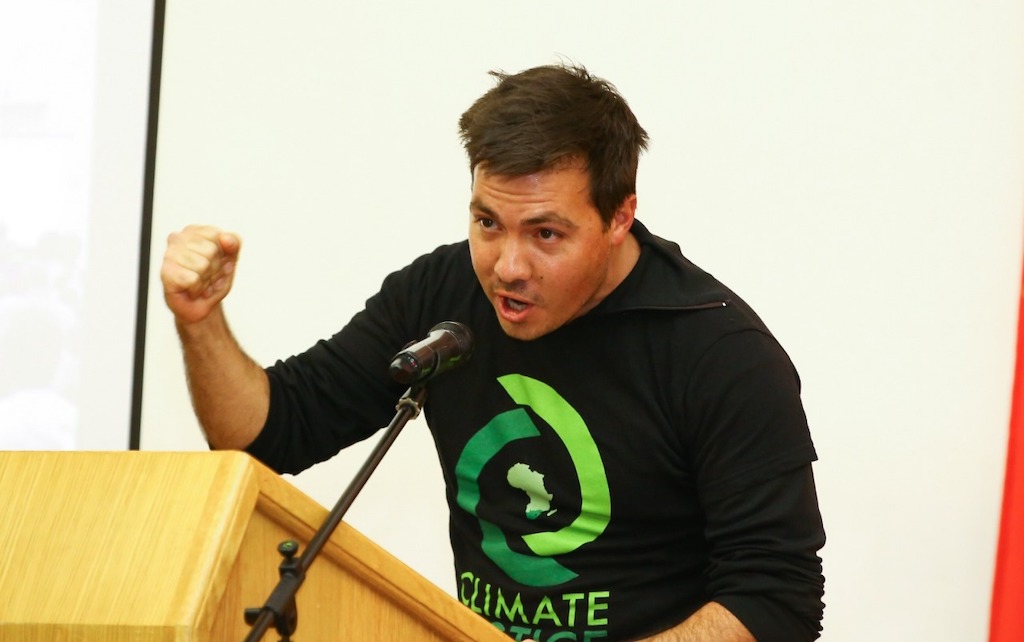
Alex Lenferna: ‘Carbon capture technologies are one way of avoiding the energy transition.’ Photo supplied
‘Dirty lie’
For critics like climate justice activist Alex Lenferna, “clean coal is a dirty lie. While carbon capture addresses carbon emissions, it may exacerbate other environmental concerns related to coal combustion.
“I think the carbon capture technologies are one way they [the government] want to keep us stuck on coal use as a way of avoiding the energy transition, even if they know, in their hearts, that the technology is not really feasible; this is a big worry.”
Lenferna said there are some technologies that can slightly remove some of the air pollutants, but a lot of those technologies make coal much more expensive because they cost so much to install.
“When we’re at a point where solar and wind are already cheaper than coal without those technologies, adding them just doesn’t make economic sense,” Lenferna said. “The problem with these carbon capture technologies is they’re far too expensive.”
He said carbon capture projects in other parts of the world had proved unsuccessful, referring in particular to the “Kemper project” in the United States. Intended to host the first commercial-scale carbon capture project on a large coal plant in Mississippi, its construction stopped after delays and increased costs prompted regulators to decide in 2017 that the facility could run on natural gas only.
Lenferna said another challenge associated with carbon capture technology is its energy-intensive nature. Achieving economic viability requires a significant amount of energy input, which could translate to higher coal consumption and water usage. Other pollutants such as sulphur dioxide and nitrous oxide are not captured by carbon capture systems, he added.
“The money that’s spent on carbon capture could be better spent on other technologies that better deliver on decarbonising and are also cheaper,” he said. “Our money is better invested in solar and wind than it is in these incredibly expensive technologies which remove only one pollutant from coal but don’t reduce a lot of the other pollutants.”
Thabo Molelekwa is an associate journalist of Oxpeckers Investigative Environmental Journalism, and a graduate of our #PowerTracker professional support and training programme. This investigation was supported by the African Climate Foundation’s New Economy Hub
• You can track the development of energy projects across Mpumalanga province on the Oxpeckers #PowerTracker tool
